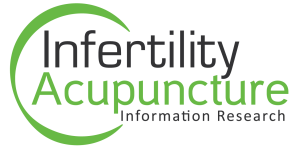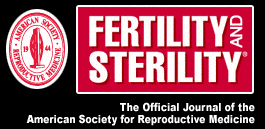Acupuncture on the day of embryo transfer significantly improves the reproductive outcome in infertile women: a prospective, randomized trial
National Institute of Environmental Health Sciences
Vienna, Austria: There was heartening news today (Wednesday 3 July) for would-be parents worried because they had difficulty conceiving. A new study being presented to Europe’s leading reproductive medicine conference shows that most healthy couples concerned because the woman was not pregnant after a year of trying will conceive during the second year.
A US team from the National Institute of Environmental Health Sciences in North Carolina who analysed data on 782 couples from seven European cities1, concluded that even when the woman was aged between 35 and 39, fewer than 1 in 10 failed to conceive after 2 years unless the male partner was over 40.
Lead investigator Dr David Dunson suggested that couples should be patient and doctors should not intervene too fast with assisted reproductive techniques unless there are known reasons for a couple not conceiving naturally within a year.
He told the annual conference of the European Society of Human Reproduction and Embryology that recent research undertaken by his team showed that fertility in women started to decline as early as the late 20s and for men from their late 30s2 . But, this was due primarily to declines in the per menstrual cycle conception rate and not to an increase in the proportion of couples unable to achieve an unassisted pregnancy.
Now his team has extended their research using data from the European Fecundability Study to see what the implications are for fertility rates overall.
“On average the time to pregnancy increases with the age of the woman. The percentage failing to conceive within a year ranged from 8% for 19-26-year-olds to 13 to 14% for 27 to 34-year-olds to 18% for 35-39-year-olds.”
“But, regardless of age, most of the women who failed to conceive within the first 12 cycles conceived in the next 12. Only 3% of 19 to 26-year-olds, 6% of 27 to 34-year-olds and 9% of 35 to 39-year-olds failed to conceive in the second year, provided the male partner was aged under 40. Starting in the late 30s though, male age was also important: it meant that the percentage of failures after one year for women aged 35 to 39 rose from 18% to 28% if the male partner was over 40. After the second year the figure was 9% with male partners under 40 and 16% with male partners over 40.”
Dr Dunson said there were clear increases with age in the number of menstrual cycles needed to achieve pregnancy and in the probability of being classified as clinically infertile – a definition applied after a year of trying to conceive.
But, their research had clearly shown that among outwardly healthy couples with no known conditions associated with infertility, most who failed to conceive naturally within the first year will conceive naturally in the second year – regardless of age.
“So, in the absence of clinical indicators of infertility in addition to a long time to pregnancy, it may be appropriate to delay assisted reproduction until the couple has failed to conceive naturally in 18 to 24 months. There is a large amount of normal variability in fertility and many couples having below average, but normal fertility may fail to conceive within a year. This is particularly true for older couples, many of whom fail to conceive within the first year but are successful in the second.”
He said it was important for doctors to avoid recommending assisted reproduction too soon due to well-documented side effects. “Fertility treatment, such as IVF and ICSI, can result in an increased risk of multiple pregnancies, pregnancy complications, low birth weight, major birth defects and long-term disability among surviving infants. In addition, the chance of success with ART decreases with age, while the side effects increase in prevalence.”
1 Data were drawn from a large multinational study – the European Study of Daily Fecundability. It enrolled 782 women aged between 18 and 40 from seven centres – Milan, Verona, Lugano, Dusseldorf, Paris, London and Brussels. The participants kept daily records of basal body temperature and recorded the days on which intercourse and menstrual bleeding occurred. Data on 7,288 menstrual cycles contributed to the study.
2 Changes with age in the level and duration of fertility in the menstrual cycle. Human Reproduction. D. Dunson et al. Vol. 17. No 5. pp 1399-1403






